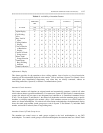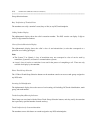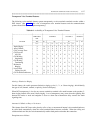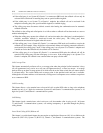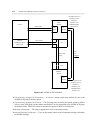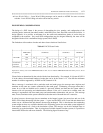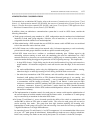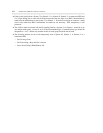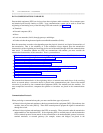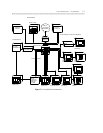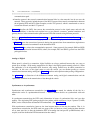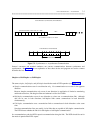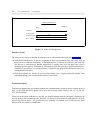DISTRIBUTED COMMUNICATIONS SYSTEM (DCS) 6-23
_ ______________________________________________________________________________________
_ ______________________________________________________________________________________
_ ______________________________________________________________________________________
ADMINISTRATION CONSIDERATIONS
To determine how to administer DCS nodes, refer to the DEFINITY Communications System System 75 and
Generic 1.1 Implementation manual (555-204-654), the DEFINITY Communications System System 85 and
Generic 2 Feature Descriptions manual (555-104-301), and System 75 and System 75 XE Application Notes
— Distributed Communications System, Issue 3, (555-209-003).
In addition, when you administer a communications system that is a node in a DCS cluster, consider the
following information:
• Trunk groups and trunk group members in a DCS configuration must be numbered and administered
identically at both trunk group endpoints. Likewise, class-of-restriction, as well as class-of-service,
assignments should be identical at all nodes/endpoints.
• When administering a DCS network that uses AUDIX, the remote switch AUDIX users are considered
to be in the same time zone as the host switch.
• If a DCS cluster uses AAR to route private network calls, for feature transparency to work consistently,
private network trunk groups should not overflow to public network trunk groups.
• Each DCS cluster must have a uniform or coordinated numbering plan. Without regard to the
networking software running on each node, the numbering plan must be administered on a DCS
network-wide basis so that users can reach each other by dialing only an extension number, since it is
extension-number dialing that triggers the generation of a DCS signaling message. This implies that:
— In large DCS clusters, 5-digit dialing may be the only feasible method for giving each extension a
unique number. All extensions assigned to a node can have the same first digit, or first and second
digit.
— On main-satellite/tributary nodes using the Multipremises package, extension number steering,
rather than single- or multi-digit steering or DAC dialing, should be used to route calls.
— On mains that communicate with ETN tandems, and with satellites and tributaries where a fully
functional AAR package (the PNA or ETN [Standard Network] package) is not running , two
versions of networking software must be running — one to communicate with the tandem, the other
to communicate with the satellite or tributary. System 75 and Generic 1 mains must use PNA
software to communicate with ETN tandems, and UDP software to communicate with the satellite
or tributary. DIMENSION, System 85, and Generic 2 mains should use ETN (Standard Network)
software to communicate with the ETN tandem and Multipremises software to communicate with
the satellite or tributary.
• The implementation of attendant control of a trunk group at a remote switch requires administration of
the console buttons at both the attended switch and the remote switch. A maximum of 12 trunk groups
may be controlled by an attendant for the entire DCS cluster.
• In System 75 and Generic 1, access tie trunks provide the ability of the switch to communicate with
another PBX as either an ETN main or tandem switch. The access tie trunk group will not send or
receive traveling class marks. This group does have digit insertion capability for incoming calls.
Intermachine tie trunk groups will receive and send traveling class marks and will always outpulse the
7-digit RNX addresses or 10-digit DDD addresses.
In connecting System 75s and Generic 1s in a DCS arrangement, it is recommended that either access
tie or just ‘‘tie’’ trunk groups be administered. Intermachine tie trunks are not as simple to administer.
In this case, traveling class marks are not used by the System 75s or Generic 1s in the DCS complex.



